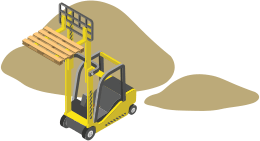Do YOU have an online store?
E-commerce has been growing steadily for years, but thanks to the pandemic, online sales have gone straight up and vertical – up 50% in the second quarter of this year and completely shattering last Christmas’s record online season.
It is universally expected that this trend will continue.
Maybe, if you don’t have an e-commerce operation, then you are missing a big opportunity.
Getting an online store going is easier than ever. And thanks to Amazon, there are a lot of rules, which if you know and follow them, can avoid a lot of the pitfalls.
SUCCESSFUL STORES
I’ve commented before that, in the younger days of online stores, no one knew the best way to do things. Now, especially thanks to Amazon, there are many established rules. Guideposts, and principles to help guarantee success.
If you use a pre-built platform like Shopify, a lot of these “right answers” are built-in. But not all, and if you want or need more flexibility, and you are building a store (as we do) in WordPress, you want to know these rules.
It’s not like breaking traffic laws, like driving on the left side of the road in the U.S. But the tragedies can be just as sad.
Let’s talk about them.
STOREFRONT
A store needs a storefront. In the case of an online store, this is the home page, unless the store is only a portion of the website. Why put visitors through an extra click to find what they are looking for?
As with any website, your home page needs to tell people what you sell, who you sell it to, such as geographical area or other limitations such as “only available to licensed practitioners.” Oh yes, and why YOUR store, since chances are 1000 other stores sell the same kind of thing. “Always free shipping” “lowest prices on the web guaranteed” “no questions asked free returns” are popular (and effective) examples.
NAVIGATION
In the case of online stores, navigation takes on extra meaning and importance.
It’s all about how a visitor finds what they are looking for.
Many Google searches are looking for a specific product – a part number for example. Hopefully, the search will take them directly to that product page in your store. But that is not guaranteed. There’s a good chance they’ll arrive at your storefront.
Navigation depends to some degree on the size of your store – meaning, how many products. It’s a lot easier to find one item out of a 100, then one out of a million. It may start with categories. If you don’t have too many different categories (types of products) you can put them all in a column on the left (an expected location), or even as part of the main menu, or on a horizontal secondary menu, below the main menu at the top. Otherwise, a solution is needed, such as sub-categories and even sub-sub-categories – so you don’t condemn people to scroll through a hundred or more categories. They’ll give up and leave your site for one easier to find their way around.
Usually, when a category is selected, it opens a category page, that then lists all the items in that category, with thumbnail pictures and brief descriptions. Sometimes it is possible to add an item to their shopping cart directly from the category page. If there are a lot of items in the category, you don’t want to condemn people to scroll down a forever page or pages looking for “the” item.
Again, you’ll lose them.
So that brings me to the next big thing, and big it is indeed.
SEARCHING AND FILTERING
The more items you have, the more important this is. A robust search function lets visitors enter a part or model number, a brand or provides a fully searchable description. Then they can quickly narrow down from hundreds or thousands of items to one or a handful.
The so-called “faceted search” is equally useful. For simplicity, let’s use the common term, “filter.” Okay, you want a hairdryer, but do you want 1000 or 1500 watts? White or black? Conair or another brand?
Amazon absolutely kills it on this. After you get a search results page, the left column gives you every conceivable filter, including a very flexible price filter. You select options and get a real-time immediate update of the page. I always click on “Prime” eligible.
The more complex the options on products, the easier filtering makes things.
CHECKOUT
Most orders put in shopping carts are never purchased. The order is abandoned somewhere before the visitor becomes a customer and actually pays. In some stores, it is so bad that only a few percent, maybe one in 30, who put something into the shopping cart, actually buy.
Often, the fastest biggest improvements in-store sales come from working to improve the checkout process.
This is one area we’ve learned a lot about over the years. There’s enough to write an entire blog just on this subject. I will.
ANXIETY AND FRICTION
All the things that prevent online store sales from occurring, summarize into two words: “anxiety” and “friction.”
Online store customers are as nervous as scared colts, and not just because they are being asked to shell out their hard-earned cash to strangers they will never meet. They are sharing their credit card information in an age when credit card theft is as exceeding the speed limit.
You must do everything you can to quell those concerns. Here are some of the best ways to do that:
- A professional looking website is reassuring.
- A physical address with photos of an actual building says you really exist and won’t just take their money and run.
- A phone number people can call (preferably with an area code that matches the physical address, tells people if there’s a problem, there’s a real person to talk to for help.
- Testimonials and endorsements throughout the site and especially on checkout pages mean it isn’t just the store saying how good they are.
- Online customer service chat gives people an instant way to get help, often 24/7.
- GUARANTEES, especially no questions asked free return are proof against mistakes or problems.
- Complete adequate product descriptions and photos to help prevent mistakes that may take time and effort to unravel.
- Product reviews and ratings and, like Amazon, crowd-sourced questions answered help assure the visitor they’ll be happy with the purchase.
Remember the concerns are doubled: Concerns with the store, and concerns about the product itself. You have to deal with both.
FRICTION
Friction, the other big sale-stopper, is the sister of anxiety. Anything that makes the purchase process complicated, confusing, or unclear will cost you sales.
Every unnecessary click is a potential lost sale.
Any time people have a hard time finding what they are looking for or finding the answers to their questions, you are slowing them down and increasing the chance they’ll click off your site, never to be seen again.
Unclear checkout processes are a prime sale-killer.
Maybe the worst of all is not knowing how much you are going to end up paying. How annoying is it to have to go through the entire checkout process, right up to the end, to find out how much shipping costs? One reason for the incredible success of Amazon Prime is knowing you aren’t going to be paying shipping charges. If an item costs $19.32, that is what you are going to pay (plus possibly sales tax). The likelihood of having it delivered the next day at no extra cost? How great is that!
LOYAL CUSTOMERS
In most cases, you don’t want just one sale. It is expensive to get a new customer. You want them to come back again and again to purchase, and you want them to tell their friends. A lot of the above points help. But think about what happens AFTER they click and pay.
Order and shipping confirmations, the ability to track packages, easy returns or refunds are some of the best ways to do this. They help lead to happy customers. It is happy customers who buy again and refer you to others. Loyalty programs leading to discounts, email promotions, and easy reorders are also tremendous inducements to buy again. But only if they are already happy customers.









